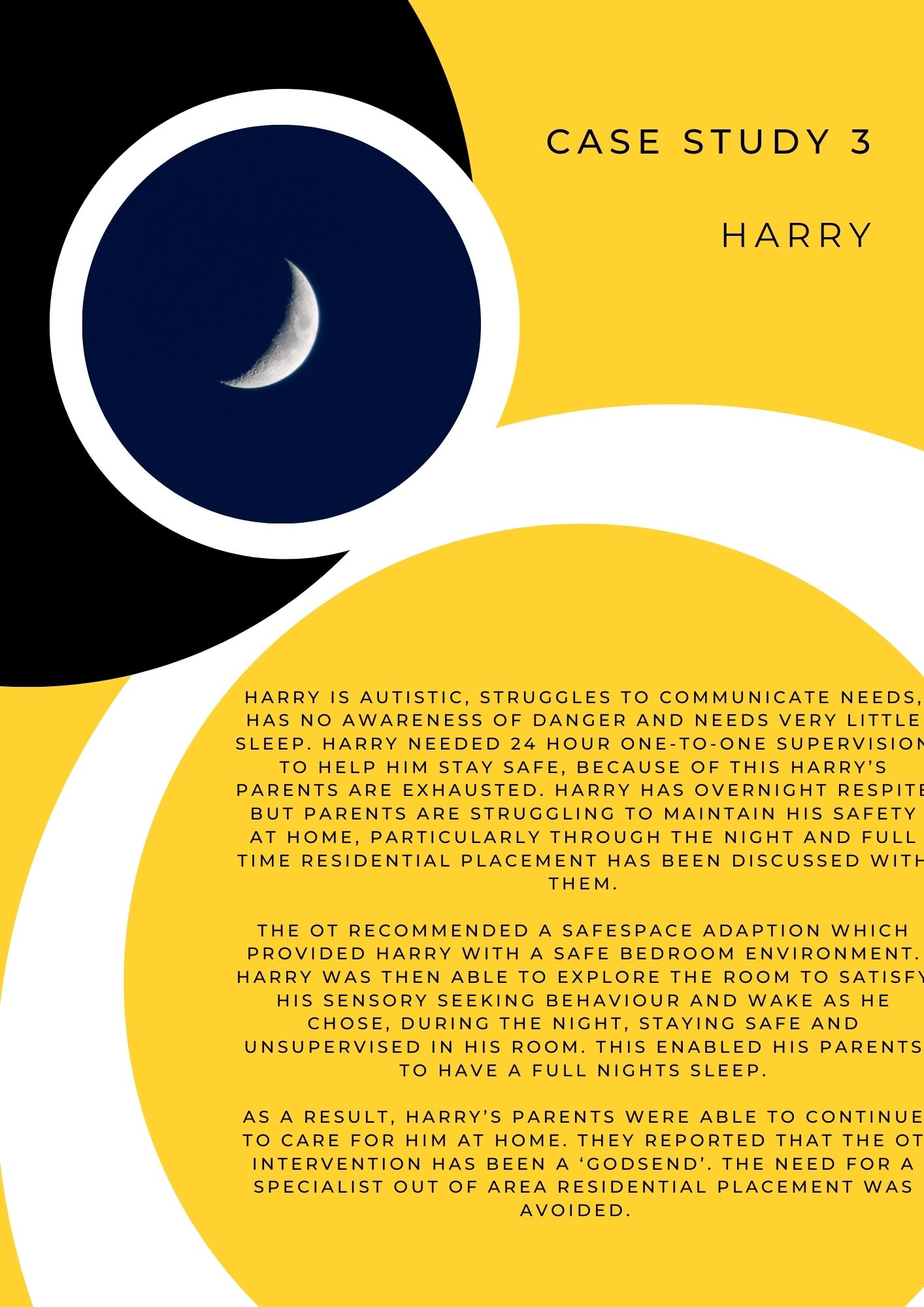Amanda Evans
Service Director, Occupational Therapist

Part 2

A case study of the impact and interventions of an Occupational Therapist in a Local Authority by Sarah Crawley, Paediatric Occupational Therapist, Doncaster Council
Roger has a diagnosis of Autism, sensory processing disorder, sleep disorder and moderate learning difficulties. Roger attends a mainstream school, however he often doesn’t attend school, spends most of his time in an in house support unit.
Roger is a young teenager and the eldest of 7 children. He lives with his parents in a 3 bedroom Local authority property.
He has 1:1 support in his lessons and access to a “bridge” card, which allows him to leave his lessons when he becomes overwhelmed. Roger also wears ear defenders at school and he leaves his classes 5 minutes early, to help him cope with all the other children in the school moving around the corridors. The use of mood cards are successful in managing his behaviour and help him to communicate how he feels, as sometimes he struggles to articulate verbally when he is anxious/overwhelmed/angry.
Roger struggles to manage the busy home environment. He becomes overwhelmed and his ‘go to’ method to communicate this is behaviours that challenge. It is reported that he can be aggressive towards his mother and siblings. As with many siblings, Roger and his younger brother, do not get on well. Due to Rogers autistic traits, learning disabilities and sensory processing disorder, he quickly escalates disproportionate confrontation and aggression and significant disputes in the household can erupt. Parents find it very difficult to de-escalate and keep siblings safe during this time.
In order to maintain Roger and his siblings safety, and enable Rodger to manage his behaviour, he requires his own bedroom space. Their current home is not big enough to allow this.
On discussion with the family, it was agreed that the family required a larger property and would need to move on the basis of medical need.
Having the additional bedroom space allows Roger the space for him to settle to sleep without disturbing his siblings. His siblings can go develop a manageable bedtime routine.
This has had a positive impact on the sleep of all the children, including Roger. The bedroom for Roger is downstairs and it allows him to manage his emotions and regulate himself without having to be too far away from his parents, who can monitor him whilst caring for their other children during the day.
By taking a whole family approach, the dynamics in the house have improved significantly which creates a positive environment for all the children to thrive in.



Have a read of our inspirational stories of staff and students working or studying in Local Authority